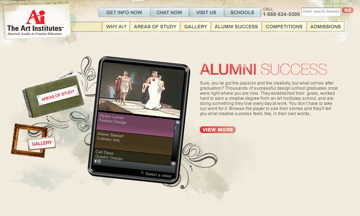
Sketchbook page, May 1, 2010, Kristen Mcahren Ortiz
FLORENCIO ORTIZ HAS ALWAYS HAD A TALENT for drawing. When he graduated from Alhambra High, in Southern California, he thought he might want to be an animator in Hollywood. So he followed the billboards and TV ads to a place called the Art Institute of Santa Monica, later to be renamed the Art Institute of California—Los Angeles, subsidiary of the Art Institutes International, LLC (“America’s Leader in Creative Education”), a division of Education Management Corporation (NASDAQ: EDMC).

